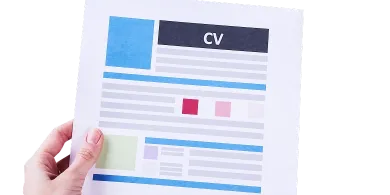Table of contents
If you’re applying to nursing school, your resume can make a big impact. Schools want more than good grades, they look for proof of your skills, experience, and commitment to patient care. The competition is high. In 2022 alone, over 78,000 qualified applicants were turned away because there weren’t enough spots (AACN). That’s why a clear, organized nursing school resume matters. In this article, you’ll learn how to write a resume for nursing school application step by step from our professional nurse resume writers that are properly certified. You’ll get practical tips on how to format your resume, write a strong objective, and showcase your experience.

Nursing schools get thousands of applications every year. To stand out, your resume needs to show you have the skills, experience, and mindset to succeed. Here are the main things admissions teams look for:
If you’re not sure how to write a nursing school resume, list each role or activity you’ve done with dates, places, and a short note on what you did. Use clear language to show how your experience connects to nursing, like helping others, staying calm, or working with a team. Even small jobs can matter if they show the right qualities.
When applying to nursing school, your resume should be clear and organized. Admissions staff need to find your information quickly. Start with your contact details, name, phone number, email, and LinkedIn if you have one. Make sure all details are correct. Next, include a short summary or objective. This should mention your goal and what you can offer the program. Keep it focused on nursing and adjust it to match the school.
In the education section, list your most recent school first. Include your degree, GPA (if it’s 3.0 or higher), graduation date, and any relevant courses like biology or anatomy. Then add your clinical or volunteer experience. For each entry, include the name of the place, location, dates, and what you did. Mention specific tasks such as helping patients, taking vital signs, or assisting nurses. At this point, it helps to understand how small mistakes can affect your application. The table below shows what to avoid and why:
| Common Mistakes | Why It Matters |
| Typos or grammar issues | Shows a lack of attention to detail |
| No section breaks | Makes the resume hard to scan |
| Missing dates or info | Leaves your background incomplete |
| Vague descriptions | Doesn’t explain what tasks you handled |
| Using “I” in descriptions | Not a standard format for resumes |
Thereafter, list your certifications and skills. This can include CPR, BLS, CNA, EMR systems, or teamwork. Add any training or tools you used in past roles. Keep the resume to one page. Use clear headers and save the file as a PDF. If you’re unsure how to write a resume for nursing school, focus on showing what you’ve done, where, when, and how it relates to the nursing field.
The first few lines of your resume set the tone, so it’s important to get them right. This section helps nursing schools quickly understand who you are and what you’re aiming for. When you write a nursing school resume, you can start with either an objective or a summary, choose the one that fits your situation.
An objective is usually best if you’re just starting out or switching careers. It explains what you’re looking for and shows that you have a clear goal. Keep it specific to nursing, not too general. A summary works better if you already have some experience, like working as a CNA, volunteering in a hospital, or doing patient care. It highlights what you’ve done and how it relates to nursing. If you use a summary, make sure it includes real details that show how your background fits the program. Your opening statement should reflect your goals and background. Whether you’re just beginning, changing careers, or have healthcare experience, here are sample statements to guide you:

“Pre-nursing student focused on developing clinical skills and contributing to patient care at XYZ Nursing School.”
“Healthcare admin professional transitioning into nursing, bringing experience in coordination, scheduling, and patient interaction.”
“CNA with 3 years of hospital experience, supported patient care, tracked vitals, and worked alongside nurses and doctors.”
Before you write your own nursing school resume, take a few minutes to think about your top skills, any direct care experience, and why you want to study nursing. Keep it short, just one or two lines, and don’t copy from templates. Schools want to see something real that fits your background. Our certified online resume writers suggest, “When you write a nursing school resume, starting with a clear and focused opening helps you stand out.”

Your experience section shows what you’ve done and how it relates to nursing. Schools want to see more than just classwork, they’re looking for signs that you understand real patient care. When you write a nursing school resume, list each role with the facility name, city, your job title, and the dates you worked. Then, underneath, add a few short bullet points or sentences that explain your tasks and the skills you used. Here’s a simple example:
St. Mary’s Hospital – Chicago, IL
June 2021 – Present
– Helped patients with hygiene, meals, and mobility
– Recorded vital signs and updated digital health records
– Supported nurses with wound care and patient transfers
Start each line with an action verb like helped, recorded, or supported to keep it direct. Be specific so the admissions team can clearly understand your role. It’s also important to show a balance of clinical and interpersonal skills. Clinical skills might include infection control, medication tracking, or using EMR systems. Interpersonal skills cover communication, teamwork, empathy, and listening. Schools look for both, and the best way to highlight them is to tie each skill to a task you actually performed. Rather than just listing skills, show how you applied them on the job. For example, if you mention infection control, add a line about following safety protocols in a busy unit.
In addition to coursework and clinical training, many nursing programs review outside certifications, volunteer involvement, and academic records when assessing applicants. Certifications such as BLS, CPR, and CNA are often required before clinical placements. According to the National Council of State Boards of Nursing, over 80% of accredited programs expect valid BLS certification, and more than half report that CNA experience improves readiness for first-year clinicals.
Leadership positions or academic honors are also reviewed. Internal data from several nursing programs show that applicants with documented leadership or sustained academic performance have higher retention and progression rates. If you’ve served in any campus roles or achieved recognition like the Dean’s List, include those with relevant dates. Volunteer work can also be part of the application review. A 2023 survey from the AACN indicated that 3 in 4 nursing programs consider healthcare-related volunteer hours a contributing factor during selection. Include the total number of hours, where you served, and what type of responsibilities you had. Resume example format:

Before you hit “send,” take a little extra time to clean up your resume. Even small mistakes can leave the wrong impression. Start by running it through Grammarly to catch spelling or grammar errors. Then read it out loud, you’ll often notice awkward phrasing or missing words that you might miss when skimming. It also helps to ask a mentor or instructor to review it. A fresh set of eyes can spot things you’ve overlooked.
When it comes to formatting, stick to one simple, professional font like Arial or Calibri, and keep your tone formal. Avoid slang or casual language, and don’t write in the first person, so leave out words like “I” or “my.” A clean, polished resume by the best professional nursing resume writing services shows you’re serious about nursing and that you pay close attention to detail.
A nursing school resume should do more than list your past roles, it should show that you’re prepared and committed to the field. Start putting it together early so you have time to make changes and check the details. It helps to have someone else review it to catch anything you might miss. Focus on being clear, honest, and specific about what you’ve done and how it relates to nursing. That’s what makes your application easier for schools to understand.